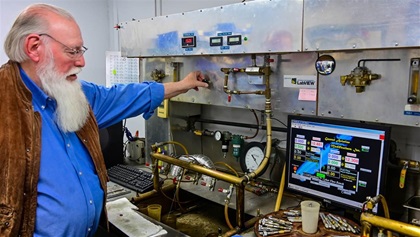GAMI gets fleetwide STC
GA moves closer to unleaded future

 “I’m proud of GAMI, the industry team, and the FAA for persevering over the long term and getting a fuel that the FAA has recognized as a viable alternative to low lead,” AOPA President Mark Baker said. “It’s vital that we find solutions to what has been plaguing general aviation since the seventies. It’s certainly the biggest issue I have dealt with in my time at AOPA.”
“I’m proud of GAMI, the industry team, and the FAA for persevering over the long term and getting a fuel that the FAA has recognized as a viable alternative to low lead,” AOPA President Mark Baker said. “It’s vital that we find solutions to what has been plaguing general aviation since the seventies. It’s certainly the biggest issue I have dealt with in my time at AOPA.”
“This is a big deal,” Baker added, “but there is a lot of work yet to be done.”
GAMI’s amber-colored G100UL can be mixed with 100LL and does not require engine modifications or retrofits. In 2021 the FAA approved STCs for GAMI covering a smaller number of Cessna 172 engines and airframes, and then expanded the approved model lists (AML) to include essentially all lower-compression engine and airframe combinations. Although that was seen as an encouraging step forward in the years-long path to supply unleaded aviation fuel to the piston aircraft fleet, the STCs did not include aircraft needing the higher-octane fuel, which account for 60 to 70 percent of avgas consumption. This latest announcement by the FAA addresses the needs of those higher-compression engines.
 GAMI co-founder George Braly said, “This is a big day for the industry. It means that for a lot of our general aviation communities, and especially for a high fraction on the West Coast, relief is on the way. And it means that our industry will be able to go into the future and prosper, and provide the essential infrastructure for this country, for everything from Angel Flights to critical training of our future airline pilots.”
GAMI co-founder George Braly said, “This is a big day for the industry. It means that for a lot of our general aviation communities, and especially for a high fraction on the West Coast, relief is on the way. And it means that our industry will be able to go into the future and prosper, and provide the essential infrastructure for this country, for everything from Angel Flights to critical training of our future airline pilots.”
Braly thanked AOPA and the GA community for their support through this long process. “Without it we couldn’t have gotten this done,” he said.
Braly has said that Ann Arbor, Michigan-based fuel supplier AvFuel is standing by to manage the logistics and distribution of G100UL, and said he is open to partnerships. “Our arrangement is that any qualified refiner or blender of existing aviation fuels will be eligible to produce and sell it subject to the quality assurance requirements that the FAA has approved,” he said.



